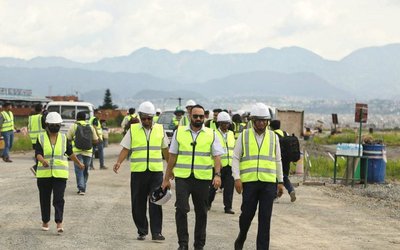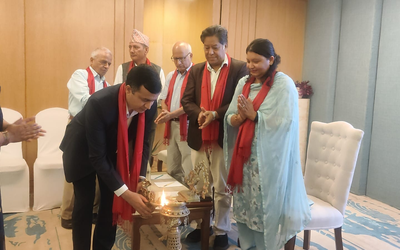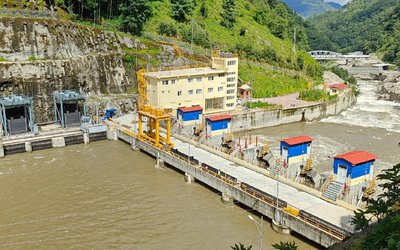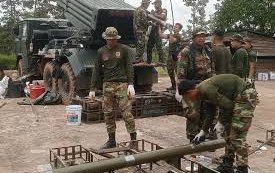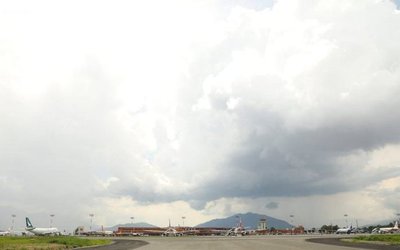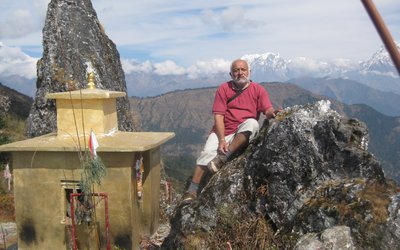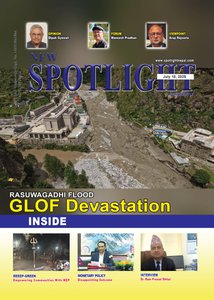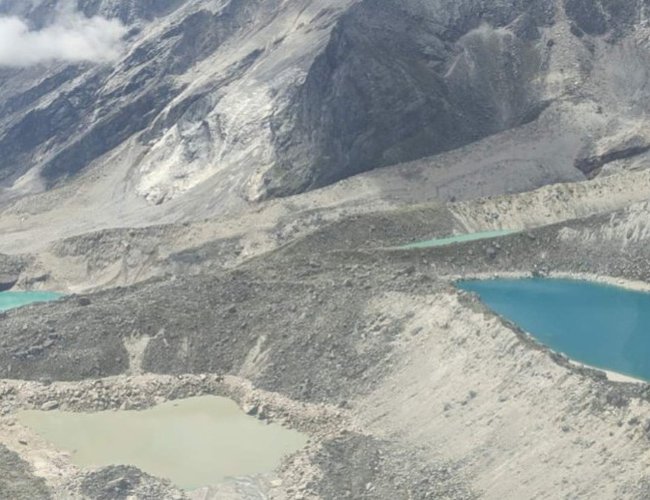
Small glacial lakes in Nepal pose a high flood risk due to insufficient research and monitoring. Dr. Rijan Bhakta Kayastha highlights the lack of data on these lakes, leading to potential harm to life and property.
While larger glacial lakes are closely monitored, smaller ones are often neglected, increasing the risk of damage.Dr. Kayastha asserts that the recent increase in glacial floods is mainly due to the bursting of small glacial lakes.
He stated, "In the Nepali month of Baisakh this year, floods occurred in Rasuwagadhi, Humla, and Mustang after glacial lakes burst. All of them were small lakes that no one even knew existed." He also mentioned that last year's glacial flood in Thame, Solukhumbu, originated from a small, newly formed glacial lake.
According to Kayastha, the rapid melting of snow deposits in the mountains due to global warming is leading to the formation of glacial lakes. Some of these lakes form internally within glaciers, while others appear at the base of mountains. Snowmelt in the arid Himalayan terrain contributes to the formation of these lakes, which gradually expand as snow accumulates during winter and melts in sunlight. When these lakes surpass the capacity of their delicate moraines, they can burst, causing glacial floods. Kayastha emphasized the importance of continuous monitoring of these lakes in both winter and monsoon seasons to prevent future disasters like the one in Rasuwa.
Preliminary studies conducted after the Rasuwa flood suggest the presence of numerous small glacial lakes within glaciers. A 2023 research paper by PhD scholar Rakesh Kayastha revealed that Nepal is home to over 2,300 small glacial lakes, with more than 1,000 of them hidden within glaciers and posing a flood risk as temperatures continue to rise.
Between 2023 and 2025, global temperatures have soared to unprecedented levels. Nepal shares its Himalayan borders with China and India, where a significant number of glacial lakes are also believed to exist. The Koshi River basin along the China-Nepal border harbors the highest concentration of both large and small glacial lakes, followed by the Gandaki River headwaters.
In the source region of the Mahakali River, the number of glacial lakes, both large and small, is increasing. Chinese sources report 25 extremely dangerous glacial lakes in Chinese territory that feed into Nepal. ICIMOD has documented 47 glacial lakes, with 24 located in the Koshi River basin. There is one glacial lake at the source of the Trishuli River, with more small lakes forming. On the Indian side, there is a glacial lake at the source of the Mahakali River. Additionally, 21 other glacial lakes at the headwaters of Nepal's major rivers are at risk of bursting.
Dr. Dhiraj Pradhanang, a glaciologist, mentioned thatNepal's glacial research began in the 1970s with support from the Japanese government. ICIMOD conducted a comprehensive study in 2015, with sporadic personal and institutional studies in limited areas since then. Progress has been slow.
Efforts to mitigate risks have been focused on larger, well-known lakes like Imja and Tsho Rolpa. Dr. Pradhanang highlighted the need to address long-term impacts in addition to immediate burst risks. He stressed the importance of assigning clear responsibility to an agency for continuous monitoring and early warning systems.
.High Risk
Nitesh Khadka, a glaciologist from the Chinese Academy of Sciences, notes that smaller glacial lakes in Nepal are expanding at a faster rate than larger ones. The melting snow is also leading to an increase in supraglacial lakes, which are temporary and often unstable.
Recent global research and events suggest
that smaller lakes are more susceptible to bursting compared to larger ones. In China's transboundary watershed regions, the average size of large glacial lakes is only 0.05 square kilometers. Only 16% of the lakes exceed this size, with the majority being classified as small yet hazardous.
- Lower Solu Hydropower Start Generation, Connected to the National Grid
- Jul 26, 2025
- Weather Forecast: Generally Cloudy In Hilly Region And Partly Cloudy In Rest Of Nepal
- Jul 26, 2025
- ADB Funded Upgradation Work of Tribhuvan International Airport Is Progressing: DG Pradeep Adhikari
- Jul 25, 2025
- IOE Secretary-General Santos Praise FNCCI’s Role in Improving Industrial Relations
- Jul 25, 2025
- Weather Forecast: Generally Cloudy Across The Country, Heavy Rain Is Likely To Occur In The Few Places Of Bagmati And Gandaki Provinces
- Jul 25, 2025
